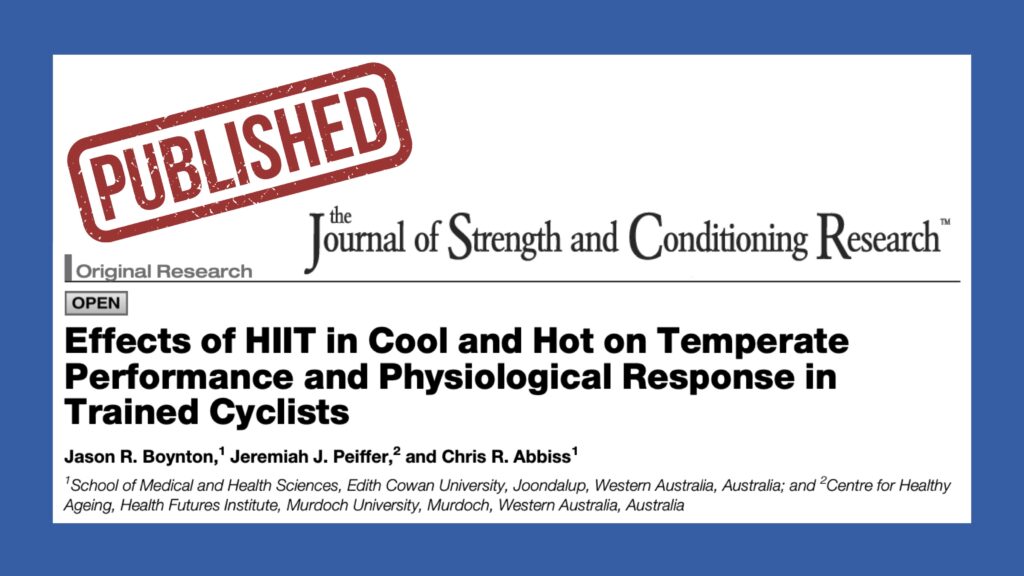Dr. Boynton and colleagues published a study investigating the effects of hot and cool conditions on HIIT outcomes in trained endurance athletes in the Journal of Strength and Conditioning Research. This article is now available for free download on the JSCR website.
Abstract: Boynton, JR, Peiffer, JJ, and Abbiss, CR. Effects of HIIT in cool and hot on temperate performance and physiological response in trained cyclists. J Strength Cond Res 39(3): e485–e495, 2025—This study investigated cardiopulmonary responses in hot and cool high-intensity interval training (HIIT) and the subsequent effects on time-trial (TT) performance and physiological responses in temperate conditions. Twenty trained cyclists were separated into 2 groups and completed a 4-week HIIT intervention (8 sessions, 5 × 4 minute) at an environmental temperature (TA) of either 13° C (HIIT13) or 35° C (HIIT35). Cardiorespiratory data (e.g., heart rate [HR] and time above 90% V̇o2max [T > 90% V̇o2max]) were assessed for the first and last interval sessions. Subjects completed 20 km TTs in temperate conditions (22° C) before (TT1) and after (TT2) HIIT training, during which power output, HR, and thermoregulatory measures were recorded. T > 90% V̇o2max was greater in HIIT13 (875 ± 295 seconds; p = 0.007), compared with HIIT35 (420 ± 395 seconds). Average power output during the TT increased from TT1 to TT2 in both groups (HIIT13p = 0.023, 3.3 ± 3.4%; HIIT35p = 0.003, 7.3 ± 6.3%) but with no significant interactions or differences between groups (p = 0.115; p = 0.421, respectively). Within-subject increases for HR and core temperature were observed during TT2 for HIIT13 (2.7 ± 2.1%, 0.5 ± 0.6%) but not HIIT35 (1.5 ± 4.9%, 0.0 ± 0.7%). After 4 weeks of HIIT, the improvement in temperate 20-km TT performance was not greater for HIIT13 than HIIT35, despite greater T > 90% V̇o2max during 13° C HIIT vs. 35° C HIIT. Physiological responses (e.g., HR and thermoregulation) during the TT differed between HIIT13 and HIIT35, indicating varying adaptive responses.

